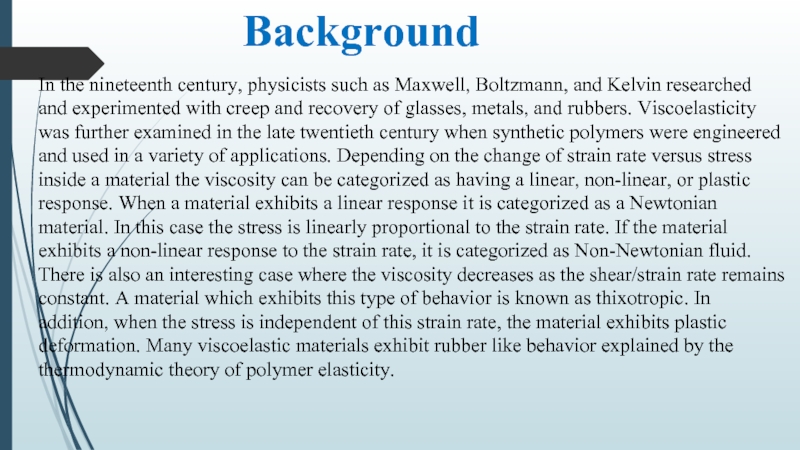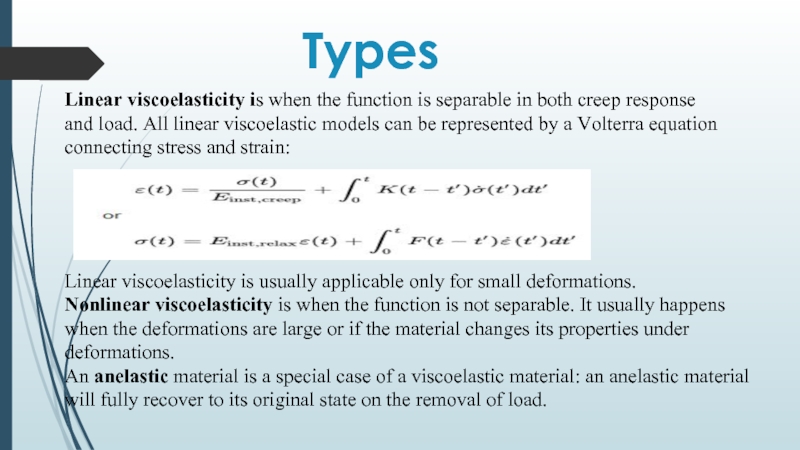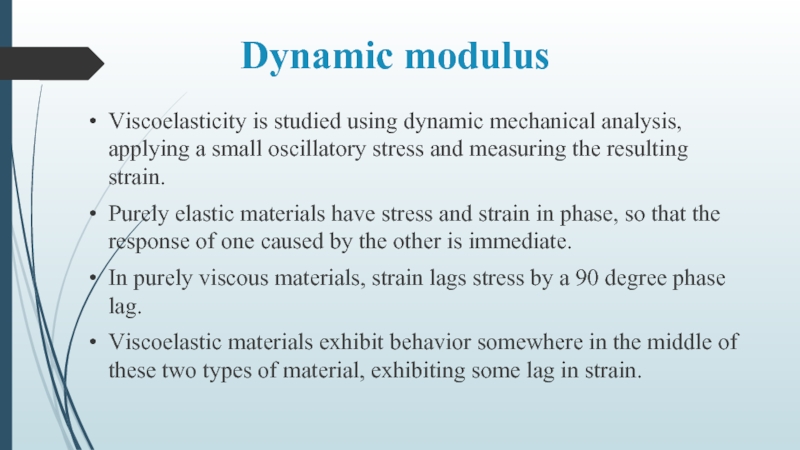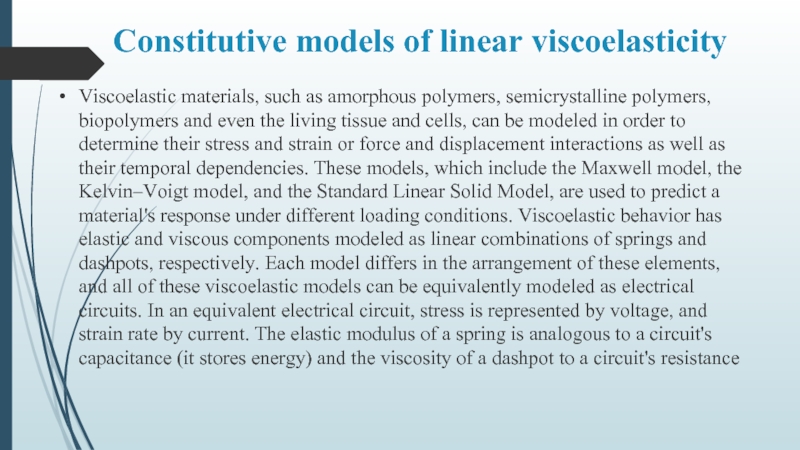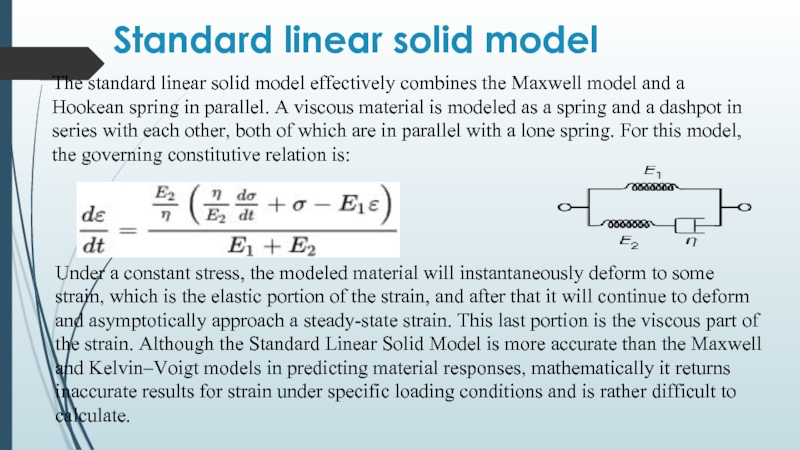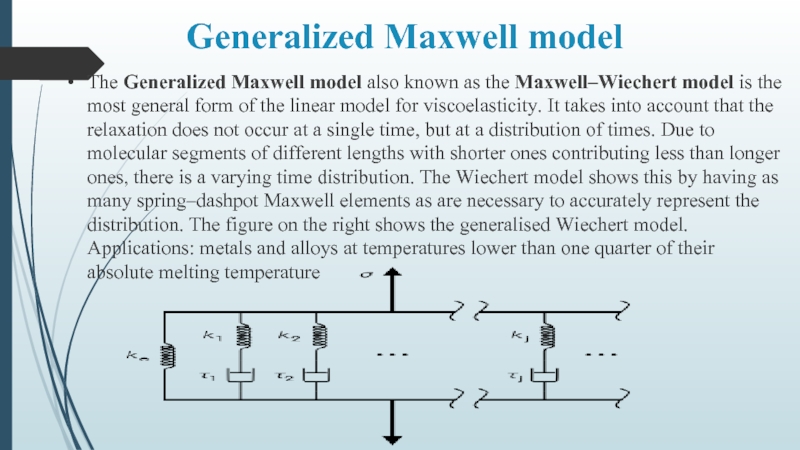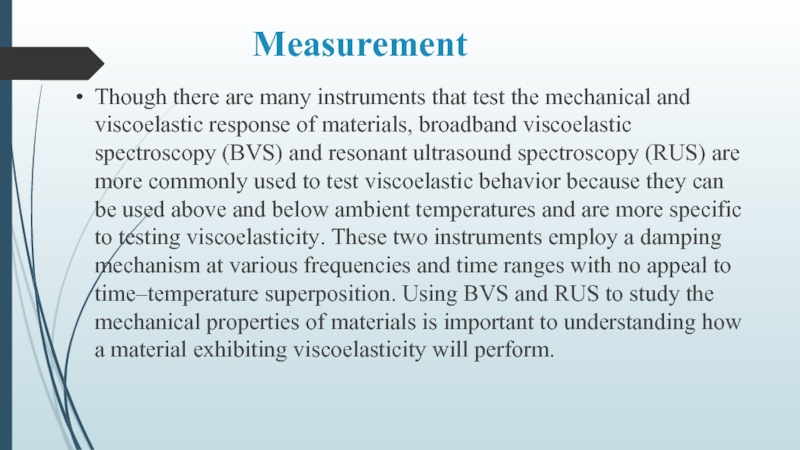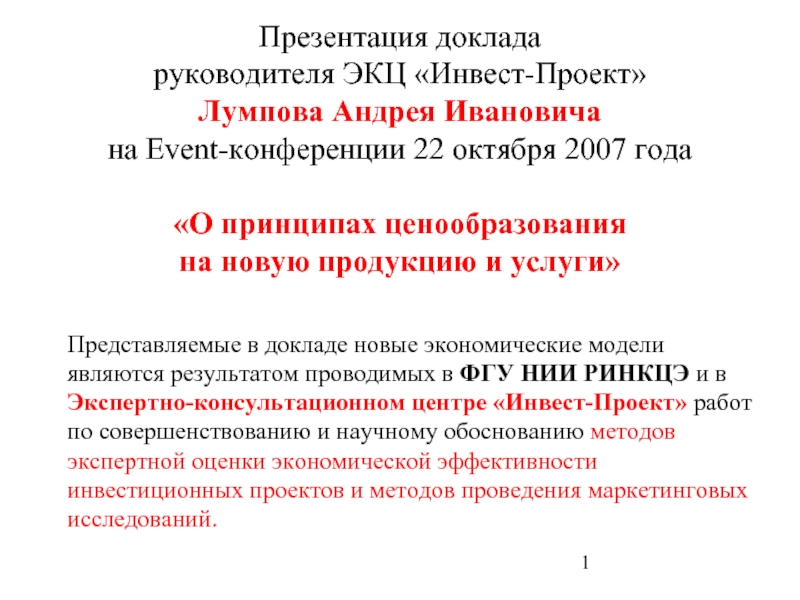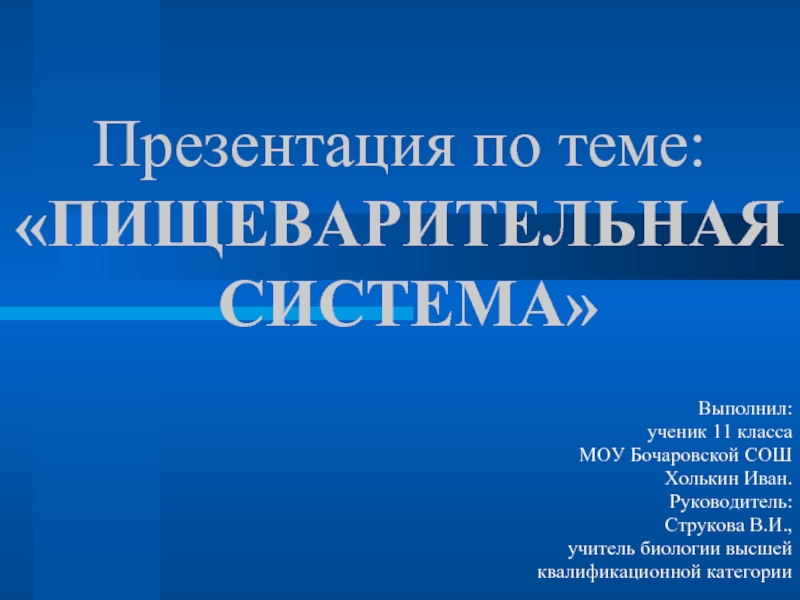- Главная
- Разное
- Дизайн
- Бизнес и предпринимательство
- Аналитика
- Образование
- Развлечения
- Красота и здоровье
- Финансы
- Государство
- Путешествия
- Спорт
- Недвижимость
- Армия
- Графика
- Культурология
- Еда и кулинария
- Лингвистика
- Английский язык
- Астрономия
- Алгебра
- Биология
- География
- Детские презентации
- Информатика
- История
- Литература
- Маркетинг
- Математика
- Медицина
- Менеджмент
- Музыка
- МХК
- Немецкий язык
- ОБЖ
- Обществознание
- Окружающий мир
- Педагогика
- Русский язык
- Технология
- Физика
- Философия
- Химия
- Шаблоны, картинки для презентаций
- Экология
- Экономика
- Юриспруденция
Viscoelasticity presentation презентация
Содержание
- 1. Viscoelasticity presentation
- 3. Background In the nineteenth century, physicists such
- 5. Types Linear viscoelasticity is when the function
- 6. Dynamic modulus Viscoelasticity is studied using dynamic
- 7. Constitutive models of linear viscoelasticity Viscoelastic materials,
- 8. Maxwell model The Maxwell model can be
- 9. Kelvin–Voigt model The Kelvin–Voigt model, also
- 10. Standard linear solid model The standard
- 11. Generalized Maxwell model The Generalized Maxwell model
- 12. Measurement Though there are many instruments
Слайд 1Viscoelasticity
Viscoelasticity is the property of materials that exhibit both viscous and
Viscoelastic materials have elements of both of these properties and, as such, exhibit time-dependent strain. Whereas elasticity is usually the result of bond stretching along crystallographic planes in an ordered solid, viscosity is the result of the diffusion of atoms or molecules inside an amorphous material.
Слайд 3Background
In the nineteenth century, physicists such as Maxwell, Boltzmann, and Kelvin
Слайд 5Types
Linear viscoelasticity is when the function is separable in both creep
Linear viscoelasticity is usually applicable only for small deformations.
Nonlinear viscoelasticity is when the function is not separable. It usually happens when the deformations are large or if the material changes its properties under deformations.
An anelastic material is a special case of a viscoelastic material: an anelastic material will fully recover to its original state on the removal of load.
Слайд 6Dynamic modulus
Viscoelasticity is studied using dynamic mechanical analysis, applying a small
Purely elastic materials have stress and strain in phase, so that the response of one caused by the other is immediate.
In purely viscous materials, strain lags stress by a 90 degree phase lag.
Viscoelastic materials exhibit behavior somewhere in the middle of these two types of material, exhibiting some lag in strain.
Слайд 7Constitutive models of linear viscoelasticity
Viscoelastic materials, such as amorphous polymers, semicrystalline
Слайд 8Maxwell model
The Maxwell model can be represented by a purely viscous
Under this model, if the material is put under a constant strain, the stresses gradually relax. When a material is put under a constant stress, the strain has two components. First, an elastic component occurs instantaneously, corresponding to the spring, and relaxes immediately upon release of the stress. The second is a viscous component that grows with time as long as the stress is applied. The Maxwell model predicts that stress decays exponentially with time, which is accurate for most polymers. One limitation of this model is that it does not predict creep accurately.
Слайд 9Kelvin–Voigt model
The Kelvin–Voigt model, also known as the Voigt model, consists
The constitutive relation is expressed as a linear first-order differential equation:
This model represents a solid undergoing reversible, viscoelastic strain. Upon application of a constant stress, the material deforms at a decreasing rate, asymptotically approaching the steady-state strain. When the stress is released, the material gradually relaxes to its undeformed state. At constant stress, the Model is quite realistic as it predicts strain to tend to σ/E as time continues to infinity. Similar to the Maxwell model, the Kelvin–Voigt model also has limitations. The model is extremely good with modelling creep in materials, but with regards to relaxation the model is much less accurate.
Слайд 10Standard linear solid model
The standard linear solid model effectively combines the
Under a constant stress, the modeled material will instantaneously deform to some strain, which is the elastic portion of the strain, and after that it will continue to deform and asymptotically approach a steady-state strain. This last portion is the viscous part of the strain. Although the Standard Linear Solid Model is more accurate than the Maxwell and Kelvin–Voigt models in predicting material responses, mathematically it returns inaccurate results for strain under specific loading conditions and is rather difficult to calculate.
Слайд 11Generalized Maxwell model
The Generalized Maxwell model also known as the Maxwell–Wiechert


